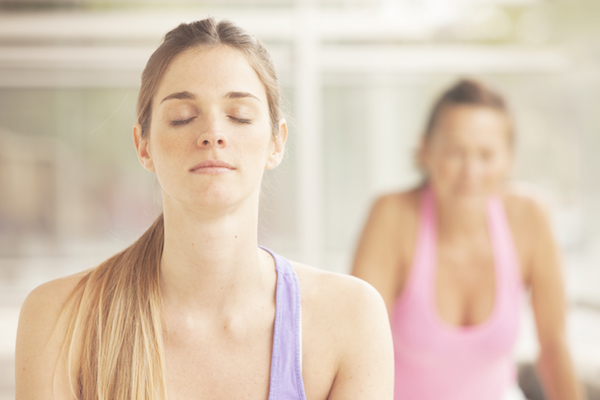Healthy Exercise Habits

If you are a baby boomer, an age group defined by being born between 1946 and 1964, you are one of more than 74 million people across the country. Unfortunately, most of you have spent the last several decades sitting behind a desk, in your vehicle, on the phone, or other types of sedentary activities that have taken a toll on your muscles, joints and organs, often resulting in pain, poor posture, loss of mobility, and often times, added stress.
If that is your story, you can start now to improve your health, and feel better even if you are still working full time. We’ve compiled a list of healthy exercise habits that boomers can incorporate into their daily lives.
Breathing:
Yes, of course, if you are reading this article, you are breathing. However, there’s a distinct difference between normal breathing, and actively bringing your attention to breathing. Think of it as a mindful practice or a restorative yoga class. Breathing does much more than keep you alive. When you actively think about breathing, it tells your brain you are relaxed, which tells your heart rate to slow, your blood pressure to dial back, and your muscles to relax. As a result, you can potentially reduce your risk of a long list of diseases linked to chronic stress. It’s equally important that when you are doing any type of regular, heartrate raising exercise, that you breathe properly as well, keeping the muscles fully oxygenated.
Gentle stretching:
Doing gentle stretches every day will help your muscles remain limber and improve your flexibility. Additionally, before you begin any type of vigorous exercise, such as running, tennis, cycling, skiing, etc., you should spend about 10 minutes doing warm-up exercises to wake the muscles up to reduce the possibility of cramps.
If you suffer at all from an issue with a tight Achilles tendon or hamstring, we recommend stretching in the morning after a warm shower, before a sports activity as well as afterwards to avoid post-activity tightness.
Wall-sits:
Thanks in part to the sedentary lifestyles and posture-killing desk jobs, back pain is nearly a normal condition in the U.S., with 31 million Americans experiencing low back pain at any given time. Interestingly, the majority of those are women. A good exercise to help combat lower back pain are wall sits, as they require a flat back. This form of exercise not only helps alleviate common back pain, but also works to strengthen your quads. Add a bit more resistance by adding a stability ball between your knees or using a resistance band. You’ll be surprised how quickly your back will feel better.
Practice your balance:
We encourage you to start small. Use some sort of stabilizer; a countertop, wall, chair, anything that is quickly available should you feel like you need support. Even by bringing one foot up to your other knee and concentrating on staying stable, you will increase your overall mobility, coordination, and helps to keep the brain engaged. As you begin to feel more confident, you can move away from your stabilizing surface. Balancing does keep your muscles and mind in shape.
These simple exercise habits can be done on a daily basis, and don’t require large blocks of time. If you are still working, you can accomplish them at your desk, at break and lunch times, or even during a bathroom break. As you build a routine, you’ll find yourself getting stronger physically and mentally.
- How Seniors Can Feel Empowered in a Digital World with Accessible Technology
- February Is American Heart Month
- Thriving as a New Caregiver: Self-Care Secrets Revealed
- Bridging the Gap: Supporting Seniors Without Nearby Family
- Distance Caregiving Simplified: Modern Strategies for Compassionate Support
FREE BROCHURE Today!
